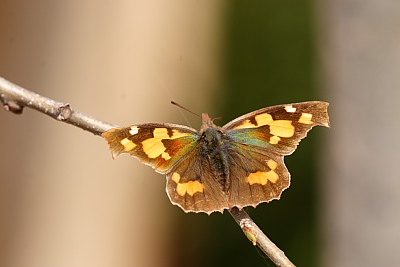
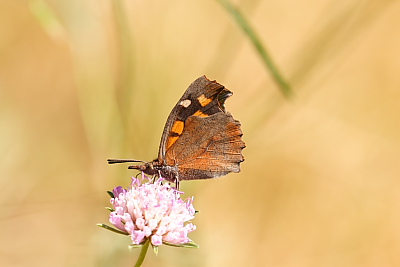
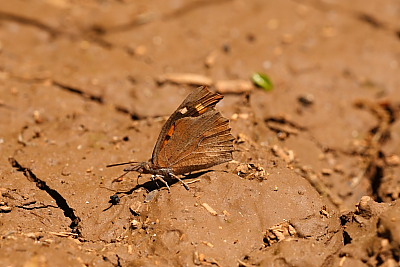
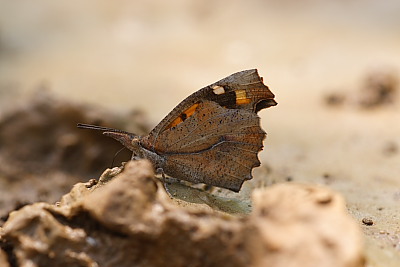
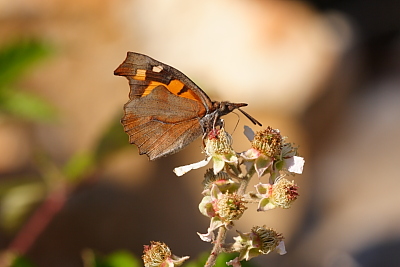
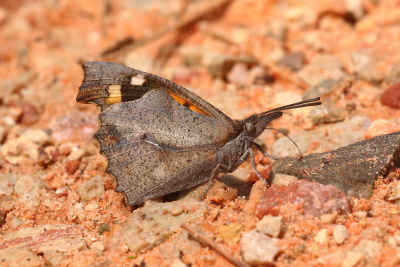
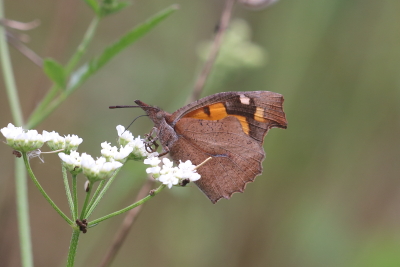
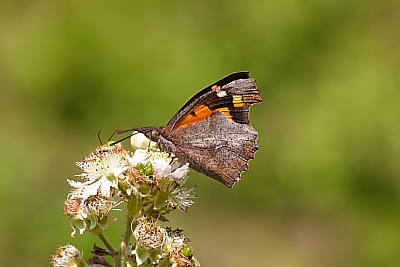
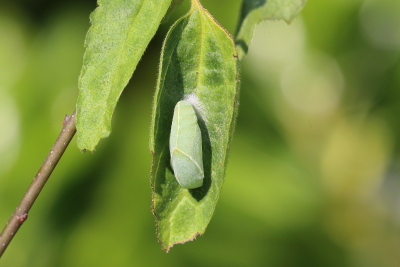
Nettle-tree Butterfly (Libythea celtis)
2025 photographs highlighted in green. Click on any photograph to go to an enlarged picture, or simply scroll down the page.
|
A strange insect, with unusual-shaped wings and very long palpi. It is the only one of its genus in western Europe. It appears to spend most of its time in the height of the summer trying to escape from the heat. I normally see it only briefly in high summer, but in 2018 I visited one of its normal haunts in northern Var in June and it was flying in good numbers, so clearly this is the best time to see it. The illustration in T&L shows the male as having a more deeply scalloped hindwing, very square at the anal angle, compared to the female. In most species where the hindwing is scalloped, it seems most pronounced in the female. |
It is a species often tied to its larval hostplant, Nettle Tree (Celtis australis), and females can sometimes be seen almost glued to these trees in early spring. Nettle Tree is often used as an ornamental tree in town centres in southern France and I have seen celtis on them on several occasions. A superb video of the life-cycle of celtis has been produced by Filming VarWild and can be viewed on YouTube here: www.youtube.com/watch?v=CEOyZN8QU4g |
| ref | sex |
observations |
alt. m |
| 4702 | F |
I suspect 4702 is a hibernator as it appears rather worn so early in the season. It was sitting high in a small leaf-less tree in the centre of a small village, occasionally flitting around but always returning to the same part of the tree. It was joined in this strange charade by a Large Tortoiseshell (Nymphalis polychloros). I subsequently discovered, thanks to Matt Rowlings, that the tree was a Nettle Tree, the larval hostplant, to which celtis is often closely tied. The body shape and behaviour suggests female. |
780 |
| 16276 | ? |
celtis is not often seen nectaring, although I have seen it in numbers on Bramble (genus Rubus). The photograph is at a slight angle, so the wings look slightly foreshortened; 11387 shows the correct perspective. The curvature of the hindwing suggests male. |
220 |
| 11369 | M |
I'm guessing this a male, based on its puddling behaviour, even though the hindwing shape points to female. It could just be taking moisture from the ground but, as I've commented elsewhere, it is not clear to me to what extent females actually puddle. This puddling behaviour is quite common in France, for most species, but only on one or two occasions can I say for certain that I have seen a female puddling for sure. Certainly all the puddling blues, where it is easy to identify the sexes, have all been males. |
450 |
| 11387 | M |
a similar comment to 11369. |
450 |
| 26061 | M | one of a number of celtis nectaring on Bramble. | 800 |
| 51001 | M | a crisp fresh male taking salts from the ground. | 200 |
| 45184 | ? | probably a male. | 140 |
| 33918 | F | I'm guessing this is a female, based on the straightness of the hindwing at the anal angle. | 820 |
| 42577 | pupa | a celtis chrysalis | 220 |
33918_female_Alpes-de-Haute-Provence_15Jul13